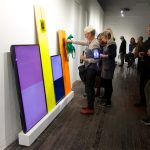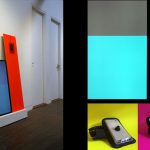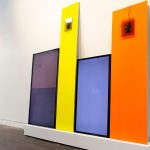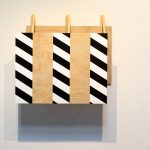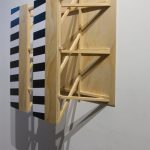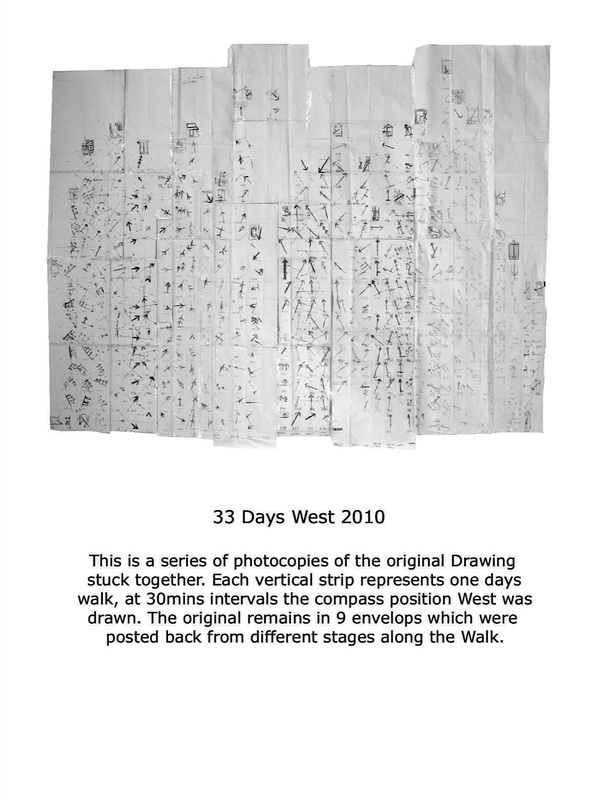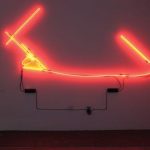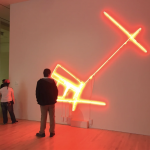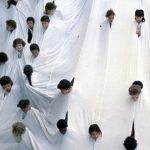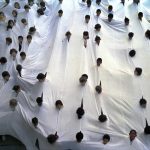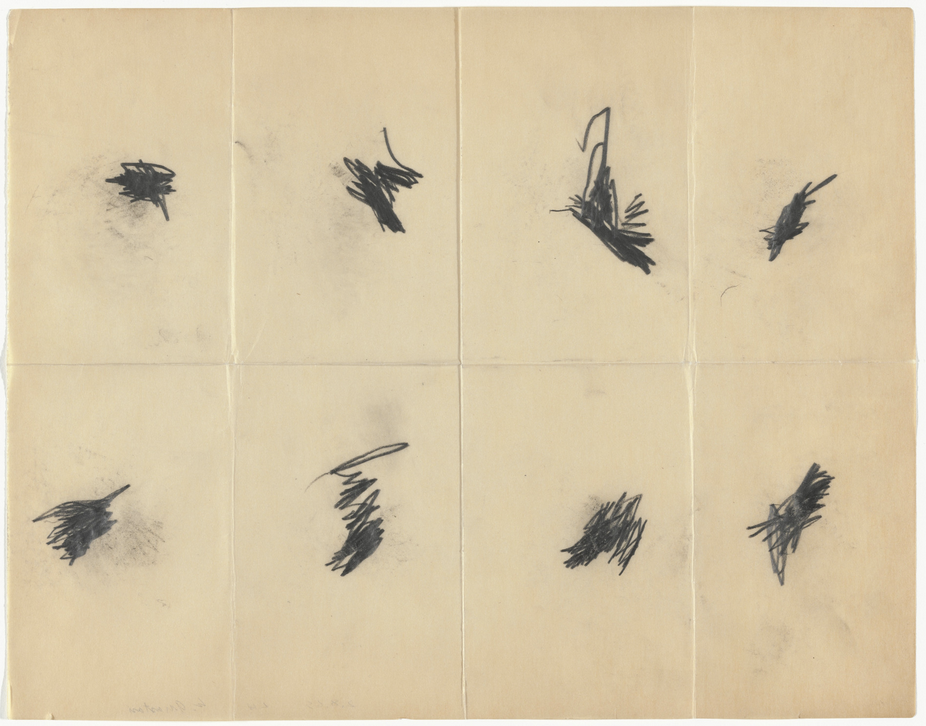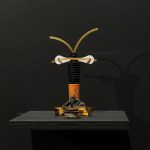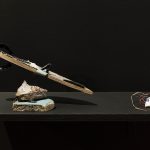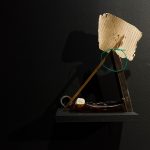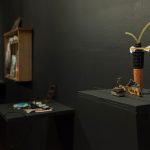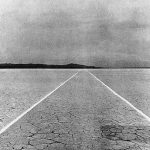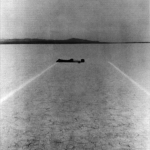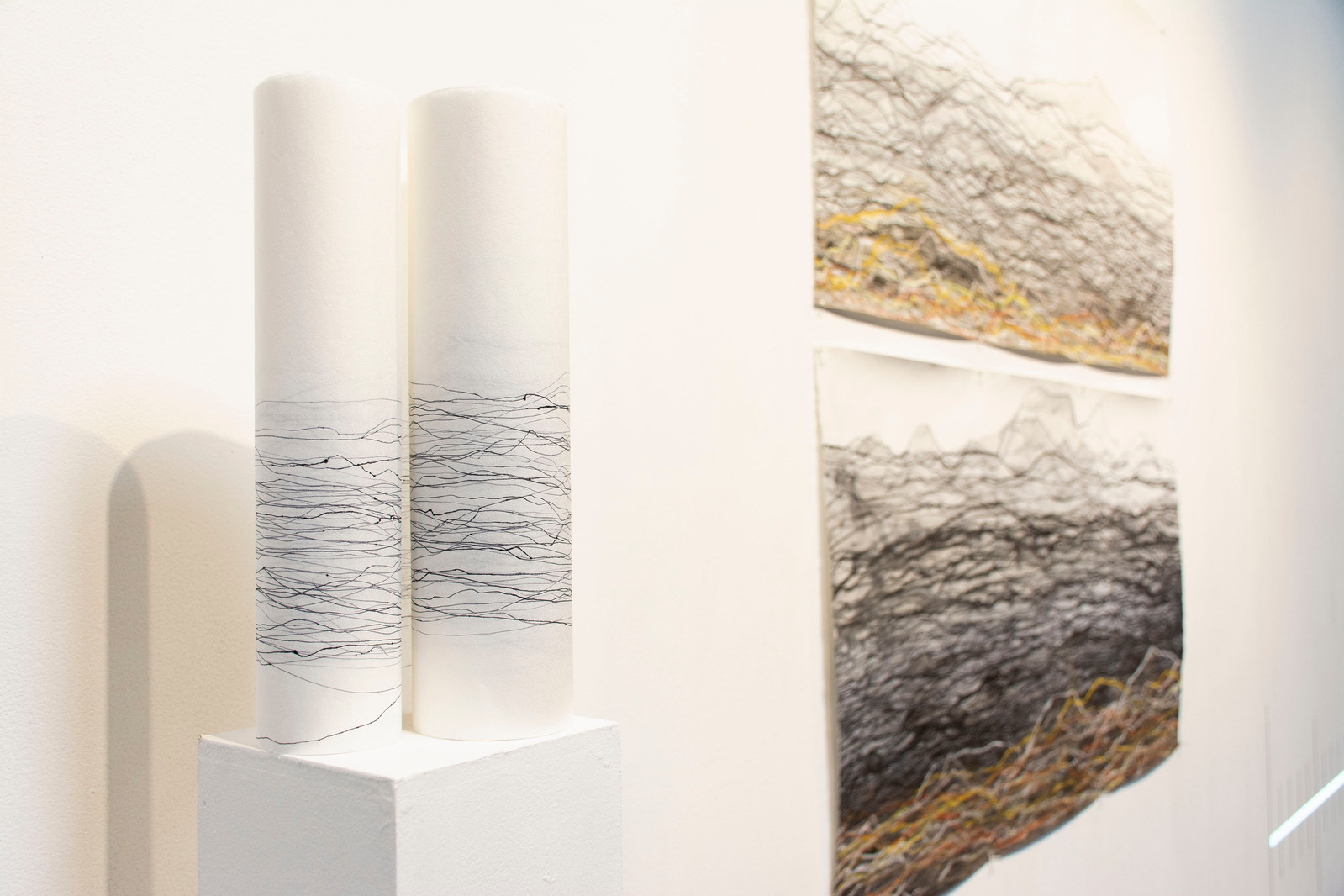
“Mollie Rice explores human spatiality, and sensations of place, through an experimental drawing practice. Multiple visits to a particular site by the artist yield sound recordings, which are then translated into drawings in the studio, creating a complex connection between percpetion and place, action and experience. The works in this exhibition were created through a series of ten thousand step walks along Parramatta Road, starting from a place of significance to the artist and ending in a new location, which is then explored through processes of active listening and the physical record of drawing. ” (credit)
